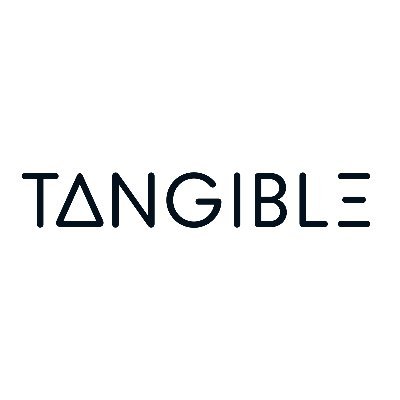Weekly Report | Key Testimony from Witnesses in the Second Week of the SBF Trial; Scroll Mainnet Genesis Block Has Been Born
整理:饼干,ChainCatcher
"What Important Events Happened This Week (10.9-10.15)"
1. The Genesis Block of Scroll Mainnet Was Created at 2 PM Beijing Time on October 10
According to ChainCatcher, the Ethereum native zkEVM Layer 2 solution Scroll's mainnet genesis block was generated at 2 PM Beijing time on October 10, as shown on the Scroll block explorer scrollscan.com. Scroll officially posted on the X platform in Esperanto "La estonteco estas malfermita" (The future is open), possibly hinting that its zkEVM mainnet is about to go live.
Previous report, in September, Scroll co-founder Ye Zhang stated in an interview at Token2049 that the new zkEVM is expected to launch in a few weeks, having undergone extensive testing and code audits. (Source link)
2. Action RPG Game Big Time Token Surged Over 20 Times After Launch
The action RPG game Big Time's token BIGTIME launched on OKX at 10 AM on October 11 and surged nearly 20 times in just two days. Coinbase has opened BIGTIME deposits and labeled it as an "experimental" asset. Once the asset supply is sufficient, trading on the BIGTIME-USD trading pair will be phased in. Binance's contract trading platform launched the USDT-based BIGTIME perpetual contract at 10:30 PM on the 12th, with a maximum leverage of 20 times.
On October 13, the BIGTIME token on BNBChain experienced a rug pull, plummeting by 100%. However, the blockchain game Big Time responded that the token referred to in the news is not the official Big Time token and is unrelated to it.
According to RootData, Big Time is a multiplayer action role-playing game for PC that utilizes procedural generation and combines: real combat, such as PVE dungeons; in-game items dropping as NFTs; and open-world adventure style. The project completed a $10.3 million Series A funding round on May 12, 2021, led by FBG Capital, with participation from DCG, Alameda Research, Sound Ventures, and OKX Ventures.
3. Zhao Changpeng: BTC Halving Will Not Double Price Overnight, May Reach Multiple Historical Highs After a Year
According to ChainCatcher, Zhao Changpeng posted on Binance Square that based on his experience and the past three halving cycles, there will be increasing rumors, news, anxiety, expectations, hype, and hopes in the months leading up to the BTC halving (from now). The day after the halving, BTC price will not double overnight; within a year after the halving, BTC price may reach multiple historical highs.
At the same time, Zhao emphasized that there is no evidence to prove a causal relationship, and history cannot predict the future. BTC is expected to halve on April 25, 2024, with less than 200 days remaining. (Source link)
4. He Yi: Binance Will Not Freeze or Seize Any Public Assets, International Business Entities Must Follow International Law Principles
Binance co-founder He Yi responded again on social media regarding the "freezing of Hamas-related accounts," stating that "Binance will not freeze or seize any public assets; international business entities need to follow international law principles, and the rules are set by the strong. In the face of international conventions, Binance is just a small player."
5. SSV Network Founder Alon Muroch Claims He Has Been Drafted
Alon Muroch, the Israeli founder of Ethereum staking infrastructure SSV Network, stated on the X platform: "I have been drafted, and the actual situation is much worse than described in the news."
His social media profile indicates that Alon Muroch resides in Israel. (Source link)
6. RWA Protocol Tangible: Panic Selling Due to DAI Redemption and Real Estate Liquidation Timeline Led to Severe Decoupling of USDR
The issuer of USDR, RWA protocol TangibleDAO, stated that panic selling due to DAI redemption and the real estate liquidation timeline led to a severe decoupling of USDR. According to Coingecko data, on October 11, the USDR (Real USD), backed by real estate, severely decoupled from its peg, dropping to a low of $0.5, and has since rebounded to $0.67.
TangibleDAO also stated that to quickly restore the stablecoin price and user trust, a series of plans will be launched, including: the protocol-owned liquidity (POL) has been withdrawn from Pearl, USDR has been burned (the protocol cannot redeem it by itself), and as much as possible will be liquidated from the insurance fund. Existing market liquid assets and locked token positions will be sold. The remaining stablecoins from POL and insurance fund sales will be provided to customers through the redemption process; a tokenized real estate pool will be launched, and after deployment, USDR will be redeemable. TangibleDAO emphasized that once the above redemption process is completed, USDR will be deprecated. (Source link)
7. Data
- Ethereum Foundation sold 1,700 ETH
- friend.tech protocol fees have exceeded $40 million, with protocol revenue exceeding $20 million
- Binance's $1 billion "Industry Recovery Plan" has deployed less than $30 million
- Alameda Research minted 39.55 billion USDT, exceeding its asset management scale
- FTX advisors protected over $400 million in assets using their hardware wallets during the FTX attack
- Caroline Ellison stated that Alameda bribed Chinese officials with $100 million
- The first wave of Raft airdrops will distribute 37.5 million RAFT
- Metamask earned $1.23 million in fees over the past month, with approximately $740,000 contributed by Symbolic Capital
"What Interesting Articles Are Worth Reading This Week (10.9-10.15)"
1. "SBF Trial Enters Second Week, Key Testimonies from Witnesses Summarized (Continuously Updated)"
More than a week after FTX founder Sam Bankman-Fried officially appeared in court, the SBF trial has seen multiple key witnesses testify, including FTX co-founder Gary Wang, former Alameda CEO Caroline Ellison, Paradigm co-founder Matt Huang, and former FTX engineers.
This article will continuously update the key witness testimonies from the SBF trial. Additionally, for the latest developments beyond the witness testimonies in the SBF trial, you can follow ChainCatcher's special tracking on this case *“Latest Developments in the SBF Trial”.
Jacob Ko is a founding member and partner of Superscrypt, an early Web3 venture fund established by Temasek, which is dedicated to investing in and supporting innovative founders and projects across the ecosystem. According to the RootData page, the fund mainly focuses on infrastructure, identity and credentials, Web3 services, and emerging use cases, having invested in projects like Aptos, Safe, LI.FI, OutDID, and Kaito.
3. "Nansen CEO: Six Key Trends Shaping the Future of Crypto"
On October 6, Alex Svanevik, CEO of crypto analytics company Nansen, shared his views on the future of crypto on the social media platform X. Svanevik highlighted six narratives that he believes will play a key role in shaping the next cycle of the crypto industry.
Alex Svanevik has over a decade of experience in data, analytics, and the crypto industry. He has been the CEO of Singapore-based Nansen since October 2019. Before joining Nansen, Svanevik was the founder and data scientist of D5 (The Data Science DAO), a decentralized organization aimed at accelerating data science initiatives. Alex Svanevik also served as the chief data scientist at CoinFi and has been a board member of Wallet Connect since February 2022.
Wasm allows developers to write high-performance code in languages such as Rust, Go, C, and C++. In the Web3 world, Wasm has been adopted by blockchain projects like Cosmos, NEAR, and Polkadot. Ethereum considered adopting Wasm but decided to stick with EVM execution.
5. "Social Ponzi: Can It Recreate the Glory of DeFi Summer?"
Friend.Tech has become popular. This model, centered around KOLs, allows fans to buy and sell "shares" of KOLs and is not complicated, albeit somewhat reminiscent of a "Ponzi" scheme; however, in a bear market characterized by hotspots and liquidity shortages, Friend.Tech has indeed created a wave of SocialFi enthusiasm.
6. "OP Stack + Zero-Knowledge Proofs = The Ultimate Game for L2?"
The current Layer 2 space is fiercely competitive, with optimistic rollups like Arbitrum, Optimism, and Base, and ZKP rollups like Scroll, zkSync, Starkenet, Polygon zkEVM, Taiko, and Linea.
While it seems that Layer 2 competition is flourishing, they all fundamentally utilize the concept of off-chain computation and on-chain proof. Whether it is optimistic fraud proof or ZKP circuit proof, the core difference in engineering practice lies in the different methods of on-chain proof; other principles are actually quite similar.
7. "When the Restaurant Industry Meets Web3: A Quick Read on Blackbird's Operating Model and Token Model"
Earlier this month, the Web3 restaurant loyalty application Blackbird completed a $24 million Series A funding round led by Andreessen Horowitz (a16z), with participation from QED Investors, Union Square Ventures (USV), Shine, Variant, and others.
So what exactly is Blackbird? How does it operate? What is the economic model of the token used to drive its loyalty and rewards system?
Some lending models are popular in the DeFi space (represented by platforms like Aave and Compound), which bring inherent challenges that can lead to market volatility and unintended liquidations. Non-liquidation lending protocols offer a simple and effective new alternative. In this model, borrowers deposit ETH and set their own liquidation price; as long as they repay the loan before the due date, they can reclaim their collateral. This model provides greater flexibility and potentially higher returns for both borrowers and lenders.
















